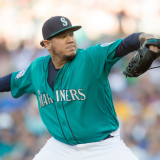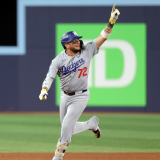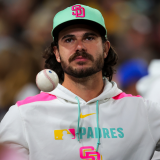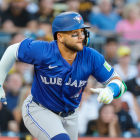2023 MLB Draft: Five storylines to know before Sunday, from likely No. 1 pick to a breakdown of bonus pools
The draft begins Sunday, July 9
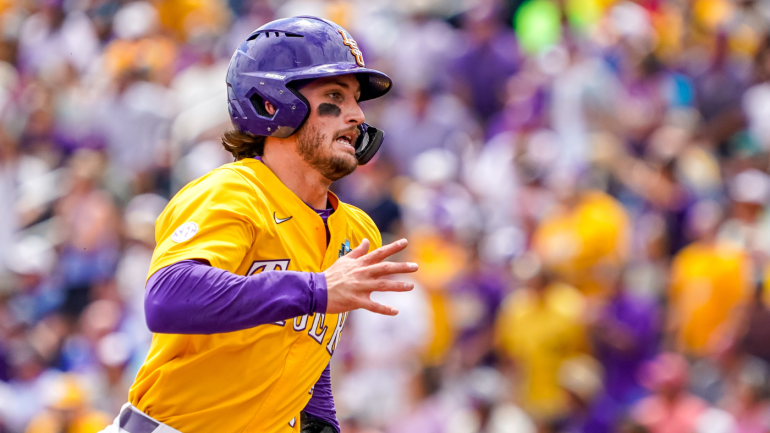
Major League Baseball's 2023 first-year amateur player draft will get underway on Sunday, July 9, or at the beginning of the All-Star Break.
The Pittsburgh Pirates will make the No. 1 selection for the sixth time in franchise history, and for the first time since 2021, when they used it to pluck catcher/outfielder Henry Davis. (Davis was recently promoted to the majors.)
CBS Sports has spent the last several weeks previewing the event, including ranking the top 30 prospects in the class, as well as the potential risers and fallers. Below, you'll find five more storylines worth monitoring.
1. Who goes No. 1?
If the Pirates make the call based on talent and talent alone, the answer will be LSU outfielder Dylan Crews. He's a known quantity, and may have been a first-round pick in 2020 if he hadn't withdrawn his name from consideration. Crews has since compiled an impressive track record against SEC competition. He's viewed as a potential well-above-average hitter at the big-league level who shouldn't require much additional developmental time in the minors.
The "if" part of that answer is doing a lot of heavy lifting. That's because until the pick is made, there's a chance they run the same playbook they did in 2021. In so many words, that means taking the top player with the lowest signing bonus demand, and then using those savings to secure better players later in the class. Among the names floating around as options for that path is Max Clark, a high school outfielder out of Indiana.
2. How deep is the class?
The top of the class is regarded as having five prospects who are on another tier from anyone else in the group. Those five players are Crews, Florida outfielder Wyatt Langford, prep outfielders Walker Jenkins and Max Clark, and LSU right-hander Paul Skenes. It's a good year to want an outfielder.
That isn't to say the rest of the class is without intrigue. There are a number of prep and collegiate infielders worth keeping tabs on, including personal favorite Arjun Nimmala, a toolsy prep shortstop from Florida.
3. Which teams have the largest bonus pools?
According to MLB.com, there are five teams who will have more than $14 million apiece in bonus pool money to hand out. Predictably, that group is led by the Pirates, who will have more than $16 million at their disposal.
Here's the top five:
- Pirates: $16,185,700
- Tigers: $15,747,200
- Nationals: $14,502,400
- Twins: $14,345,600
- Athletics: $14,255,600
On the flip side, three teams will have fewer than $6 million to spend: the San Diego Padres, New York Yankees, and Philadelphia Phillies.
4. Are there any legacy players?
Yes, of course. This year's crop of bloodlines isn't as significant as last year's collection, however. For those who've forgotten, that group included the sons of former players Andruw Jones, Matt Holliday, Carl Crawford, and Lou Collier, as well as the brothers of active players Josh Jung and Andrew Susac.
The top legacy player in this year's class is shortstop Jacob Wilson, whose father Jack played more than a decade in the majors. Beyond Wilson, top catcher Kyle Teel comes from a baseball family -- his father Garett spent time in the minors with the Dodgers, and his brother also plays at Virgina.
There are a few other connections sprinkled throughout the class -- George Lombard Jr. is the son of Tigers bench coach George Lombard Sr.; Jake Gelof is the brother of Athletics infield prospect Zack; and so on -- but realistically, if you're looking for a family affair, you should rewatch the 2022 draft.
5. Are there any clubs without a first-round selection?
No, but there are two teams who had their top picks moved down 10 slots as punishment for exceeding the competitive balance tax threshold by more than $40 million. The New York Mets will select 32nd and the Los Angeles Dodgers will pick 36th.
The Los Angeles Angels, Toronto Blue Jays, St. Louis Cardinals, Chicago Cubs, San Diego Padres, Philadelphia Phillies, Texas Rangers, and New York Yankees all sacrificed their second-round picks to sign a qualified free agent. The Rangers also punted on their third-round pick, while the Phillies, Padres, and Yankees had to forfeit their fifth-round picks.
On the inverse side, the Baltimore Orioles and Mets each have an additional third-round pick after failing to sign their selections last year.





